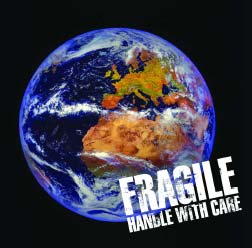Older generations frequently complain about the music that young people listen to today. They incessantly proclaim that modern popular music will fail to stand the test of time as the popular music from their youth has. I even had a professor give a bit of a lecture (which I found quite interesting) on why exactly this is so. It was not until this point that I could finally understand where these older generations are coming from. Nevertheless, I have to say that those with this point of view are not objectively observing the facts of the situation.
Explaining a study by Theodore Ordorno, my professor described how modern music has been shaped by the economy. The ‘commodifying’ of music has changed its structure, meaning and purpose. In effect, music has become merely ‘ear-candy,’ characterized by repetitive themes, a loss of authenticity and a soporific effect. Further, the composition of modern popular music involves: 1. Details that are independent of the whole 2. A melodic structure that is highly rigid and frequently repeated 3. No overall theme so details can be altered 4. A focus on intelligibility (as opposed to being abstract) while trying to appear novel. The experience that this type of music provides involves: 1. A strong reaction to parts, while the whole has little influence on reaction 2. Reminiscence of similar experiences (the listener is not forced to develop a framework in order to listen to the piece -> there is no thought involved) 3. Identifying the best pieces as those that are most often repeated (played on the radio) 4. Aesthetics that reinforce everyday life (familiar and comforting).
From this analysis, I interpret the feelings of older generations as directed toward those songs that are the most popular of today. The most blatant example in my mind of one of todays worst artists that people love is, of course, Usher. Oh my gosh, he is bad. With lyrics as original as:
“she was dancing sexy, pop, pop, popping, dropping, dropping low
never ever has a lady hit me on the first sight
this was something special ; this was just like dynamite
honey got a booty like pow, pow, pow
honey got some boobies like wow, oh wow…”
It brings me pain whenever I hear this song, or for that matter any song by Usher, Ke$ha, The Jonas Brothers, Miley Cyrus, Taio Cruz, …the list goes on. The song exemplifies the previous description of a pop song in that about half of the song is excruciating to listen to, leading up to certain catchy verses, the lyrics of which mean absolutely nothing. Surely, any of the numerous fans of this song try to block out the part in which Usher drags out a painful “Ooh, oh , oh, oh, oh, oh, oh, oh, oh, oh, oh, oh, oh, oh, oh, oh, ohh my gosh.” Therefore, strong reactions to the song only come from certain hooks throughout it. The song degrades women, talking about parts of their body as characterizing them and does so in a diction simple enough for a three year old to understand. Finally, constant repetition and a lack of any apparent theme (unless you count encouraging girls in clubs to have more sex with Usher as a theme) cause this song to be worthy of only destruction. Regardless, people love it. Little girls start to scream (with joy) when they hear it on the radio and millions of people pay money to download it from itunes. I don’t get it.
On the other hand, there are a number of pop artists that I do appreciate. I recognize their flaws and I understand the simplicity and sometimes the ignorance of their music, yet I still enjoy it. At the same time, I am fully aware that the quality of their music is much lower than that of some other artists such as Muse, Beck, Coldplay, Serj Tankian or Queens of the Stone Age who will never be mainstream because they innovate. They create entirely original pieces which often sound quite strange. It is in this strangeness that I recognize their creativity and their musical genius. In contrast, I only recognize the entrepreneurial genius in artists such as Lil Wayne or 50 Cent, who seem to be music producing machines. It is as if they have developed the perfect popular music producing formula and they strictly abide by it. Bands such as Radiohead and The Beatles are the few exceptions where the most innovative bands approach or become mainstream. However, the fact is that several decades ago, these innovators frequently became the most successful bands with the rise of rock in the fifties and sixties (Jerry Lee Lewis, Elvis, Johnny Cash, The Beatles, The Rolling Stones…), the beginnings of punk and metal in the late seventies and eighties (Billy Idol, The Ramones, Motley Crue, Guns N’ Roses, Metallica…) and the surge of grunge in the early nineties (Soundgarden, Nirvana, Stone Temple Pilots). These are the bands that will, without question, stand the test of time.

These conclusions have lead me to fully understand the perspective of many among older generations. However, modern pop music is not entirely a new thing. Flashback to the eighties: Madonna is writing songs like ‘Material Girl’ and ‘Like a Virgin.’ Although she may be boldly innovating in terms of offensive content, she is setting the stage for the future of detailed, explicit pop music of which the whole is irrelevant. Everybody thinks of the prominent line, “Like a virr-err-err-gin…” when the title of this song is mentioned -the rest is irrelevant. After the majority of authentic gangsters have left music in the late nineties, hip-hop artists will continue to rap almost exclusively about sex, drugs, the streets, money and possessions, though with an elevated level of hypocrisy.
Flashback further to the sixties, The Doors infuriate Ed Sullivan and are banned from any future performances on his show for saying the word “high” in a live performance. Meanwhile, pop artists of the era are relatively cleaner, yet they demonstrate the same characteristics as those pop artists of today that are looked down upon by older generations. The Beach Boys take a couple of ‘doo-wop’ melodies and bend and twist them a million ways to create numerous hit records. Furthermore, the content of all of their songs remains within the confine of being related to cars, surfing or girls. The Shangri-Las achieve great success releasing the corny, one-dimensional ‘Leader of the Pack’ in 1965, the content of which is related to youth relationships. Forty-five years later, Justin Bieber would achieve a similar level of success, similarly penetrating the hearts of millions of young girls with the release of his similarly annoying single, “Baby.”
My point: Has the quality of music really deteriorated over the years and become too focussed on standard topics as many members of older generations claim? No. Although the level of explicit content in pop music has dramatically increased over the years, the majority of ideas in popular music have remained consistent with or stemmed from earlier ideas. Furthermore, the weak structure and lack of meaningful or new themes in pop music has been around for decades. The only apparent shift that I can observe is the increase in the popularity of standard pop music and a decline in the popularity of those musicians who innovate. Both types of artists and bands are still around and developing, however. This shift in what is the most popular may be due to a slow decline in the rebellious spirit of the sixties and seventies. This spirit has had a number of resurgences in the music industry over the years and has possibly died out among the mainstream population. Maybe mainstream society is just too apathetic and accepting of things the way they are today. Regardless of what has become of mainstream society, I will continue to enjoy several pop artists but give full credit to those who have innovated in order for their music to come about as well as appreciate the truly strange and original modern musical innovators.






 I recently calculated my carbon footprint using a tool I found at
I recently calculated my carbon footprint using a tool I found at 





 beneficial. Similarly, a few years earlier, Kanye West released his completely original and hugely successful debut album, The College Dropout, which incorporated lyrics warning young kids about drugs and preaching Jesus.
beneficial. Similarly, a few years earlier, Kanye West released his completely original and hugely successful debut album, The College Dropout, which incorporated lyrics warning young kids about drugs and preaching Jesus. Working for his father from a young age, he learned all the basics of real estate development as well as how to be ruthless in making deals with others which would greatly contribute to his later success. He was able to achieve great success through making real estate deals and fixing up and developing hotels, skyscrapers and casinos. By the early nineties he had built up a massive real estate empire across the United States and had an estimated net worth of 1.7 billion dollars. However, due to a decline in the real estate market at this time, he lost most of what he had and the once seemingly unstoppable Trump Organization went several hundred million dollars into debt. It was only through an immense infusion of loans that his corporation was able to survive bankruptcy. Through more shrewd deal-making and hard work, Trump had recovered all of what he had lost by 1997 and his net worth was even larger than it had once been.
Working for his father from a young age, he learned all the basics of real estate development as well as how to be ruthless in making deals with others which would greatly contribute to his later success. He was able to achieve great success through making real estate deals and fixing up and developing hotels, skyscrapers and casinos. By the early nineties he had built up a massive real estate empire across the United States and had an estimated net worth of 1.7 billion dollars. However, due to a decline in the real estate market at this time, he lost most of what he had and the once seemingly unstoppable Trump Organization went several hundred million dollars into debt. It was only through an immense infusion of loans that his corporation was able to survive bankruptcy. Through more shrewd deal-making and hard work, Trump had recovered all of what he had lost by 1997 and his net worth was even larger than it had once been. Appraisals,
Appraisals,